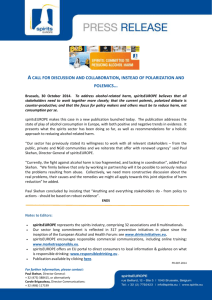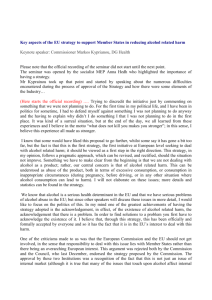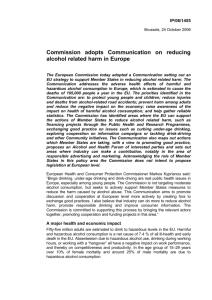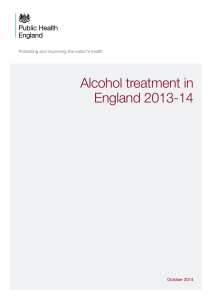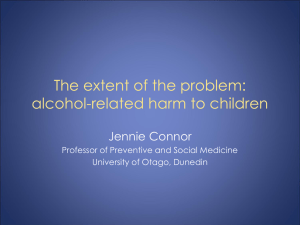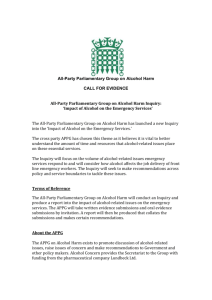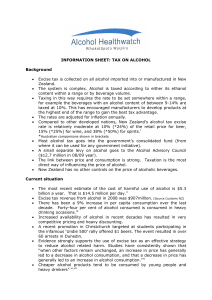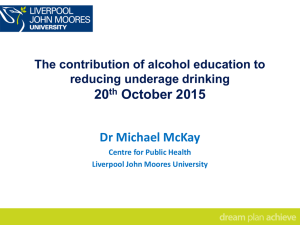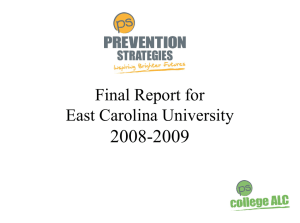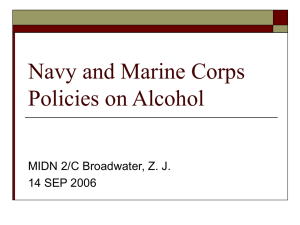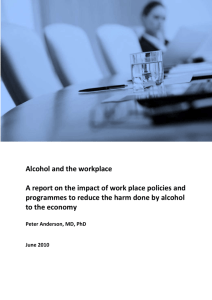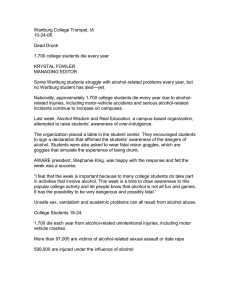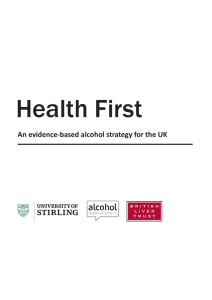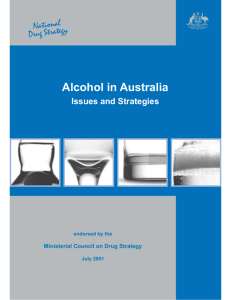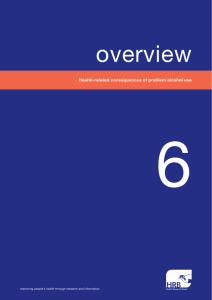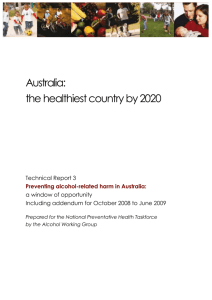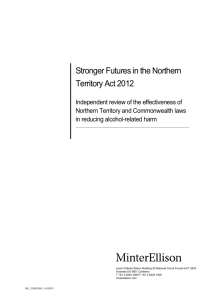DOC
advertisement
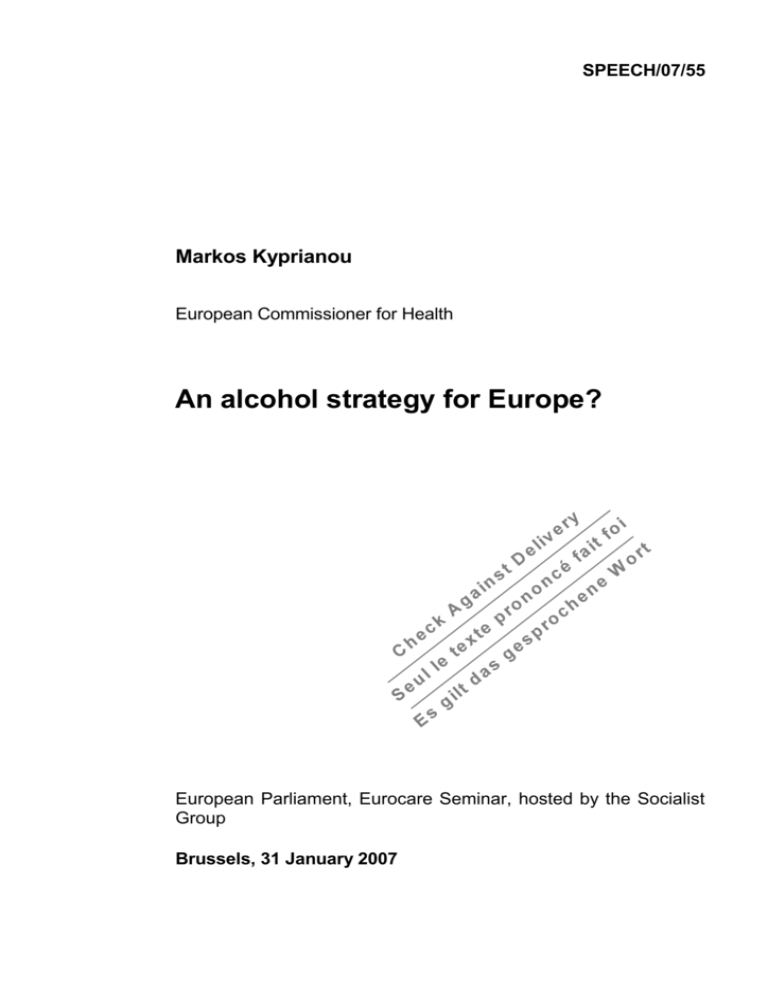
SPEECH/07/55 Markos Kyprianou European Commissioner for Health An alcohol strategy for Europe? European Parliament, Eurocare Seminar, hosted by the Socialist Group Brussels, 31 January 2007 Honourable Members of Parliament, Ladies and Gentlemen, I would like to thank the Socialist Group and EUROCARE for giving me this opportunity to present our initiatives for reducing alcohol-related harm. After a series of consultations, the Commission adopted in October last year a Communication on a European strategy to support Member States in reducing alcohol related harm. This Communication addresses a number of very serious concerns. It targets harmful and hazardous drinking rather than moderate and responsible consumption. Alcohol related harm kills almost 200,000 people a year in the EU. Many die from diseases related to excessive consumption, such as liver cirrhosis, certain forms of cancer, and neuro-psychiatric conditions. We should also bear in mind that more than 10,000 deaths a year are due to alcohol-related road accidents while 40% of all homicide cases are related to alcohol consumption. This human suffering and especially the harm done to children living in families with alcohol problems, is totally unacceptable. Equally unacceptable is the harm done to the young, who are at risk of destroying their education and employment perspectives, and of damaging their health, because of binge drinking trends - on the rise almost everywhere in Europe. The Commission’s Communication addresses all these areas of concern in a balanced manner, and it is very clear about respecting the limits of competence between the European Union on the one hand, and its Member States on the other. The Communication recognises alcohol-related harm as a major public health, social and economic concern across the EU, and underlines the need for action also at European level – something which many have fought hard to avoid. To this end, the Communication singles out five priority areas, which are relevant in all Member States and for which Community action, complementing national policies, clearly has an added value: Protect young people, children and the unborn child; Reduce injuries and death from alcohol-related road accidents; Prevent alcohol-related harm among adults and reduce the negative impact on the workplace; Inform, educate and raise awareness on the impact of harmful and hazardous alcohol consumption, and on appropriate consumption patterns; Develop and maintain a common evidence base at EU level. The Communication was underpinned and informed by a wide consultation process which revealed broad agreement that action is urgently needed in these priority areas. Opinions vary as to the most effective measures in the various areas, but we have strong research evidence for the effectiveness of the different suggested measures. One important task is to make sure this evidence is widely disseminated, available and explicit for all actors. 2 When it comes to implementing the strategy, we very much count on continued support from the NGOs. But in order to curb alcohol-related harm, we need commitment from all stakeholders. The alcohol industry, the retailers, the advertising industry, the media and many more stakeholders also need to be part of the solution – they are part of the problem, after all. With this in mind, the Communication foresees the establishment of the Alcohol and Health Forum which should have its first meeting in June. The Forum will develop the concrete multi-stakeholder action that we need at all levels. It will be one of the main pillars for the implementation of the Commission’s Communication, and I count on the economic operators to make significant contributions towards measurable progress in the areas of concern outlined earlier. The alcohol industry should, for example, contribute further to the development of common standards for advertising, marketing and sponsorship, and invest in better training for staff. Moreover, even aside from all health considerations, there is an ethical obligation for the industry not to specifically target young people through the design of alcoholic beverages, or through advertising, sponsoring and marketing. The second main pillar on which the implementation of the strategy will rely is the work done by our Member States, such as setting the minimum age for serving and selling of alcohol and setting blood alcohol limits, as well as the measures needed to enforce these rules. The action-oriented approach of the Forum will therefore be accompanied by a committee dealing with Member States' policy development and coordination. Support from the other European Institutions is the third pillar we need for implementing the strategy. The Council has already welcomed unanimously, in the Council Conclusions of 30 November 2006, the Commission's Communication as a major step towards a comprehensive and coherent Community approach to tackle the adverse impact of excessive alcohol consumption. The European Parliament, the Committee of the Regions and the Economic and Social Committee are presently preparing their reports on the Commission's Communication, and I am particularly pleased that the European Parliament's rapporteur, Mr Alessandro Foglietta, will address this audience later today. The fourth, and maybe most important pillar we need for putting the strategy into practice is support and co-operation from our citizens. I am therefore more than glad that, despite all the spin we have seen in the media before the Communication was adopted, we are getting encouraging feed-back on some of the good practice described in the Communication. In fact, in one of last year's Eurobarometers surveying views on alcohol policy, the results, which are yet to be published, show broad support for some of the major policy options mapped in the Communication. 3 This includes support for banning the selling and serving alcohol to people under the age of 18, for lower Blood Alcohol Limits for young and novice drivers, for random alcohol checks on EU roads and for health messages on alcoholic beverages and on alcohol advertisements; these could make pregnant women, and novice drivers, better aware of the dangers of drinking alcohol. To conclude, the Commission's Communication gives us a framework that can guide and structure our future work, for our citizens' health and wellbeing – and also for the benefit of our health and social systems. The Commission counts very much on your active support in taking this work forward. 4
